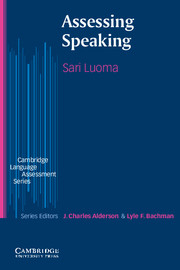Series editors' preface
Published online by Cambridge University Press: 03 May 2010
Summary
The ability to speak in a foreign language is at the very heart of what it means to be able to use a foreign language. Our personality, our self image, our knowledge of the world and our ability to reason and express our thoughts are all reflected in our spoken performance in a foreign language. Although an ability to read a language is often the limited goal of many learners, it is rare indeed for the teaching of a foreign language not to involve learners and teachers in using the language in class. Being able to speak to friends, colleagues, visitors and even strangers, in their language or in a language which both speakers can understand, is surely the goal of very many learners. Yet speaking in a foreign language is very difficult and competence in speaking takes a long time to develop. To speak in a foreign language learners must master the sound system of the language, have almost instant access to appropriate vocabulary and be able to put words together intelligibly with minimal hesitation. In addition, they must also understand what is being said to them, and be able to respond appropriately to maintain amicable relations or to achieve their communicative goals. Because speaking is done in real-time, learners' abilities to plan, process and produce the foreign language are taxed greatly. For that reason, the structure of speech is quite different from that of the written language, where users have time to plan, edit and correct what they produce.
- Type
- Chapter
- Information
- Assessing Speaking , pp. ix - xiPublisher: Cambridge University PressPrint publication year: 2004
- 2
- Cited by



